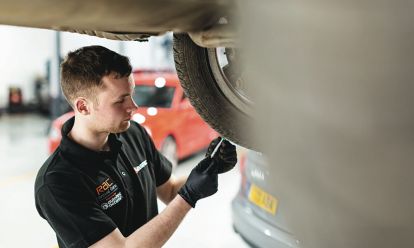Modern vehicles have included the latest technical and mechanical innovations to create a better driving experience, and DSGs have improved on what automatics used to offer.
In this know how guide, we explain what they are, how they work, and the maintenance costs.
What does DSG stand for?
DSG means Direct Shift Gearbox, and is an electronically controlled, dual clutch, automatic gearbox.
It combines the best aspects of manual and automatic gearboxes.
As an advanced automated transition, it provides the smooth and quick gear changes without the use of a clutch pedal – but uses two sets of automatic clutches.
One is for the even numbered gears, and one is for the odd numbered gears. As you drive, the onboard computer decides when you need to change gear and uses the second clutch to engage the change.
This is why they are also known as Dual Clutch Transmission (DCT) gearboxes.
DSG gearboxes
When it comes to the use of Direct Shift Gearboxes, there are advantages and disadvantages for drivers.
One of the main advantages of a DSG gearbox over other automatic or manual vehicles is the faster gear change.
This results in better fuel efficiency – which is one of the reasons why they have increased in popularity with drivers.
Fast gear changes also result in better performance and power delivery from the engine. This is why they are used in performance and sports vehicles with automatic transmissions.
Due to the balance of performance and efficiency, they are used in a wide range of vehicles.
However, they do come with their own challenges and disadvantages.
As they are a great blend of performance and fuel efficiency, they are more complex than conventional gearboxes.
This means that they can be more expensive to buy, repair, and replace.
How does a DSG gearbox work?
Direct Shift Gearboxes work slightly differently to traditional automatic vehicles. As they use two clutches that act independently from each other, they are a lot more technical.
One clutch controls the even number of gears, and the other manages the odd numbered ones.
DSGs pre-select the next gear before shifting occurs. This means that when starting a car, the second gear is already selected and ready to change once the right amount of revs and speed has been achieved.
This is also the case when driving. So, if a driver is in fourth gear, the third and fifth gears are already in position. This is automatically controlled through a Transmission Control Module (TCM).
Although DSG gearboxes are described as automatic – there is a manual element to them.
DSGs can be controlled manually through paddle shifters, although this is typically in sports vehicles, rather than conventional cars, SUVs, and vans.
DSG gearbox service
Due to the nature of DSG gearboxes, they are highly technical parts of the vehicle – and a service should only be carried out by an expert.
Take your vehicle to your trusted local garage, where they can handle the maintenance of a Direct Shift Gearbox.
For optimum performance and overall health of the vehicle, it is advisable to have it serviced regularly.
There will be specific guidelines to follow in the car owner’s manual.
DSG gearbox oil change
Contaminated or dirty transmission fluid can result in overheating or premuature wear and tear of a DSG gearbox.
The frequency of a DSG transmission oil changes will depend on the type of gearbox.
Some DSGs will need a fluid and filter change every four years or 40,000 miles, while others will not need an oil change until 80,000 miles.
The DSG tranmission fluid change interval will be detailed in the owner's manual of the vehicle.
DSG gearbox replacement cost
As they are a more specialised type of gearbox, it is not surprising to hear that Direct Shift Gearboxes are more expensive to repair and replace.
Of course, this depends on a variety of factors, including make, model, age, and type of vehicle it is – as well as how well the surrounding area of the gearbox has been maintained.
This is because a damaged gearbox can also impact the surrounding components – and other areas of the vehicle.
In order to replace a Direct Shift Gearbox, a driver will expect to pay more than £3,000.
Service, repair or MOT?
You can trust the RAC with our local approved garages and NEW mobile mechanics.


Signs that a DSG gearbox needs a service or oil change
A DSG gearbox will usually give you warning signs when it needs a service.
The most common signs that a DSG gearbox needs a service or oil change are:
- Struggling for power or doesn't stay in gear when accelerating
- Vehicle judders or jerks forward when changing gear
- Gearbox makes a banging or clunking sound when changing up or down
- Burning smell
- Long delay when selecting first gear when pulling away
If your vehicle expereinces any of these symptoms then you should arrange for the vehicle to be inspected by a local approved garage.










